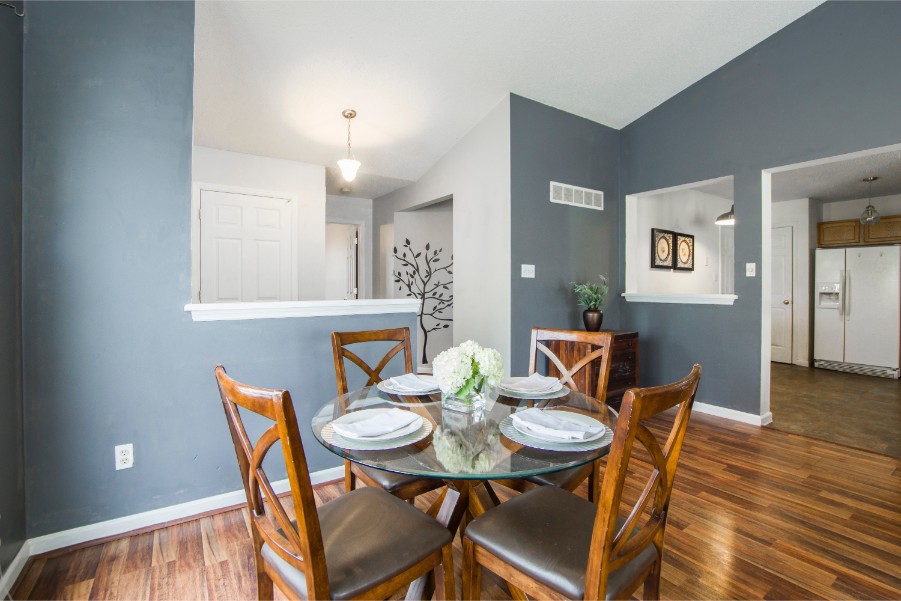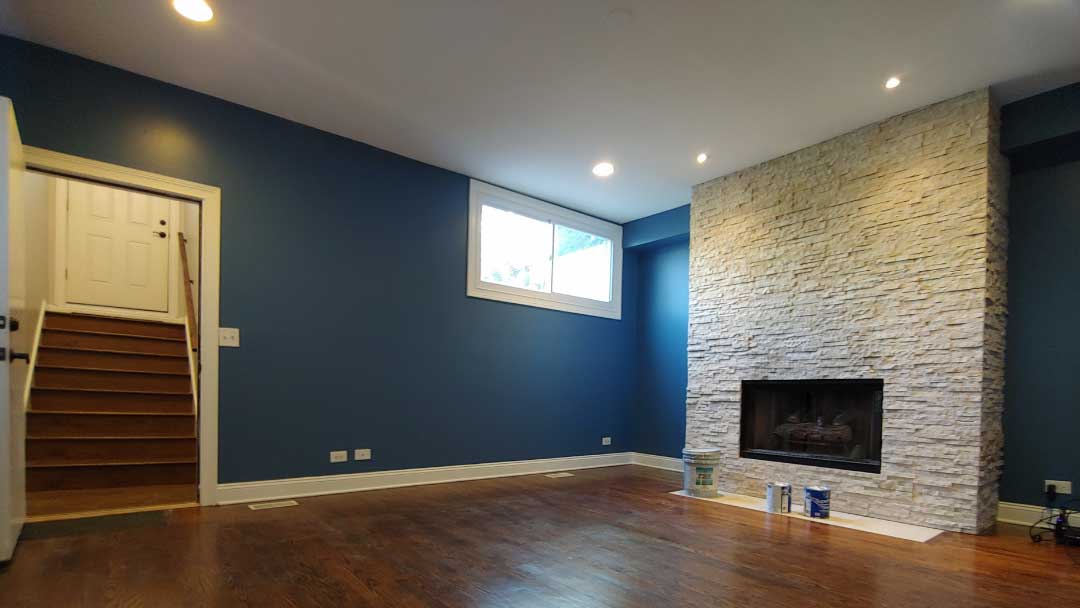Enhance Your Inside Layout With Comprehensive Shade Assessment
The combination of color assessment right into indoor style offers an one-of-a-kind opportunity to refine and raise the emotional and aesthetic vibration of a space. By involving with a seasoned color consultant, you can navigate the complexities of color choice, ensuring that your choices not just complement architectural functions yet additionally reverberate with personal design and psychological influence.
Advantages of Shade Examination

Additionally, color assessment help in making best use of natural light and enhancing spatial perception. Lighter hues can make an area appear even more expansive, while darker tones develop an intimate setup. Cleveland Metro Painting Specialists. This tactical application of shade can significantly influence the overall atmosphere of any type of interior space
In addition, expert consultants have a detailed understanding of current patterns and timeless standards, guaranteeing that the chosen colors will remain enticing with time. This foresight can conserve customers from costly redesigns in the future. Ultimately, color appointment equips clients by providing them with a clear vision and direction, cultivating confidence in their design options and ultimately leading to a much more gratifying and effective interior design outcome.
Understanding Color Psychology
The value of shade psychology in interior decoration can not be overstated, as it digs right into the psychological and emotional impacts that different tones can stimulate in people. Shades can affect mood, habits, and even performance, making them a crucial factor to consider in any type of layout task.
As an example, warm shades such as red, orange, and yellow are commonly connected with power and heat. They can stimulate feelings of enjoyment and convenience, making them appropriate for social spaces like living areas or kitchen areas. Alternatively, amazing colors like blue, eco-friendly, and purple have a tendency to stimulate peace and serenity, making them suitable for bedrooms or reflection locations.
Furthermore, the use of neutral tones can create a balanced atmosphere by permitting the bolder colors to stand apart without overwhelming the senses. Understanding these psychological impacts allows developers to produce rooms that not only look aesthetically pleasing however additionally advertise psychological well-being.
Including color psychology into interior decoration includes a thoughtful choice of shades tailored to the designated function of each area, inevitably enhancing the total experience for its residents. This awareness is critical for accomplishing a functional and harmonious interior environment.
The Color Wheel Described
Comprehending the relationships between hues is important for effective interior decoration, and the shade wheel functions as an important device in this process. The shade wheel, created by Isaac Newton in the 17th century, highlights the spectrum of colors organized in a round layout. It consists of key colors-- red, blue, and yellow-- that can not be produced by mixing various other colors. Additional colors, created by integrating primaries, consist of eco-friendly, orange, and purple. Tertiary shades result from blending a main and a second color, resulting in hues such as red-orange and blue-green.
The color wheel helps designers grasp the partnerships in between colors, including corresponding, similar, and triadic plans. Complementary colors, positioned opposite each various other on the wheel, develop dynamic contrasts that can stimulate a room.
Making use of the color wheel in indoor style not just enhances visual appeal however additionally evokes certain emotions and atmospheres, making it an important reference for color examination. Understanding these relationships ultimately equips developers to create areas that are both aesthetically i thought about this fascinating and functional.
Selecting the Right Palette
A well-chosen shade scheme can combine a space, enhance its features, and stimulate desired feelings. Various spaces offer varied features and call for schemes that mirror their desired usage; for instance, serene colors such as soft blues or eco-friendlies function well in bedrooms, advertising relaxation.
Next, take into consideration the natural light offered. Light can substantially modify just how shades appear, so it is necessary to examine the room at different times of the day. Additionally, consider existing building components and home furnishings. An unified combination ought to complement these attributes, developing a cohesive appearance throughout the room.
When selecting shades, use the 60-30-10 guideline, which recommends that 60% of the area should be a dominant color, 30% an additional color, and 10% an accent color. This proportion makes click for info sure balance and visual interest (Cleveland Metro Painting Specialists). Finally, example colors on the wall surfaces prior to dedicating, as this allows you to see just how the colors communicate with one another and the overall setting they develop in your indoor design project.
Collaborating With a Shade Consultant

When dealing with a color specialist, the process usually begins with a preliminary assessment. During this meeting, you'll discuss your vision, choices, and the existing components in your room. internet The expert will certainly evaluate your requirements and may recommend specific shade schemes that line up with your goals.
After establishing an instructions, the professional will certainly supply samples and visual help to aid you imagine the suggested color pattern. This action is vital, as colors can appear in different ways under differing illumination conditions.
In addition, a shade specialist can guide you in picking corresponding furnishings, art work, and accessories to harmonize with your picked combination. By collaborating very closely, you can accomplish a polished visual that elevates your insides and produces a welcoming environment. Ultimately, the expertise of a shade consultant can dramatically improve the total effect of your design job.
Conclusion
In recap, extensive shade assessment functions as an important device for enhancing interior decoration. By leveraging professional knowledge of shade psychology and spatial characteristics, a tailored shade palette can be established to stimulate particular feelings and create a harmonious setting. This tactical technique not only promotes a natural design narrative yet also reduces the threat of costly redesigns. Eventually, involving with a shade specialist makes sure an educated and cosmetically pleasing result, raising the total experience of the room.
By involving with a skilled color consultant, you can navigate the complexities of color choice, making sure that your selections not just enhance building attributes yet additionally reverberate with individual design and emotional influence. It consists of key shades-- red, blue, and yellow-- that can not be developed by blending various other colors.The color wheel assists designers understand the relationships between colors, consisting of corresponding, similar, and triadic systems.When choosing colors, use the 60-30-10 guideline, which suggests that 60% of the space need to be a leading shade, 30% an additional color, and 10% an accent color. By leveraging expert expertise of shade psychology and spatial dynamics, a tailored color scheme can be established to evoke specific feelings and develop an unified environment.